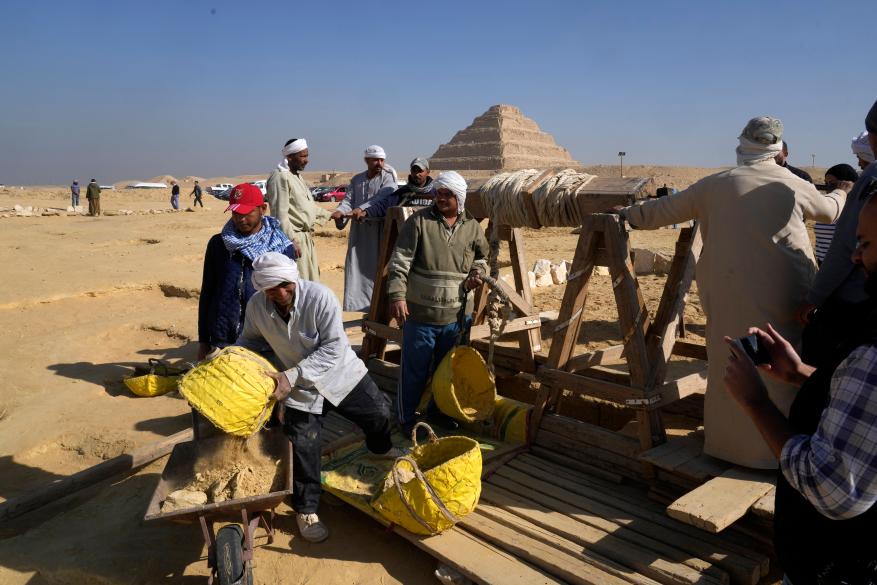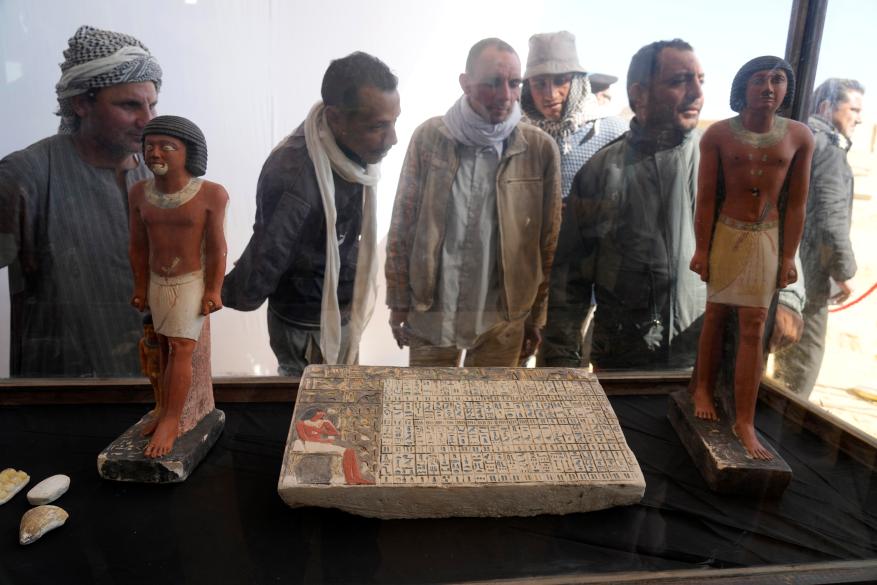Archeologists discover 4,300-year-old Egyptian mummy
Archeologists in Egypt discovered a 4,300 year-old mummy — possibly the oldest one ever found in the country — during an extraordinary dig near Cairo, officials announced Thursday.
The mummy called “Hekashepes” was located at the bottom of a 49-foot shaft near the Step Pyramid at Saqqara, where the team was working to uncover a cemetery of fifth and sixth-dynasty tombs dating back to the 25th century B.C, Zahi Hawass, director of the team, said in a statement.
Hekashepes’ large rectangular limestone sarcophagus was still sealed with the mortar ancient Egyptians had covered the tomb with over 40 centuries ago.
“I put my head inside to see what was inside the sarcophagus: A beautiful mummy of a man completely covered in layers of gold,” said Hawass, a former Minister of Antiquities for Egypt, noting that the mummy could be the “oldest” and “most complete found in Egypt to date.
The discovery of Hekashepes was hardly the most exciting find during the year-long excavation at Gisr al-Mudir, one of the oldest known stone structures in Egypt.
The “most important” tomb archeologists found belonged to Khnum-djed-ef, who was a priest, an inspector of officials and a supervisor of nobles in the pyramid complex of Unas, a pharaoh who ruled in the mid-24th century B.C.
There, the scientists also found the tomb of a royal palace official named Meri, “keeper of the secrets and assistant to the great leader of the palace, “who had the second-largest tomb in the cemetery.
In the pyramid complex of King Pepi I, a pharaoh who ruled at the turn of the 24th and 23rd centuries B.C., archeologists found the tomb of a priest that may have been named Messi, based on a false door that was found neat nine statues of the ancient Egyptian people.
A final mummy was found inside a stone sarcophagus beside an offering table and a group of stone statues representing a person named Fetek, Hawass said.
“Additionally, the expedition yielded many amulets, stone vessels, tools for daily life, and statues of deities, along with pottery,” said Hawass.
The monumental discovery comes just days after authorities said they found the ruins of an ancient Roman city near the southern city of Luxor, where they also found dozens of burial sites from the New Kingdom era, dating from 1800 B.C. to 1600 B.C.
With Post wires
Read the full article Here





